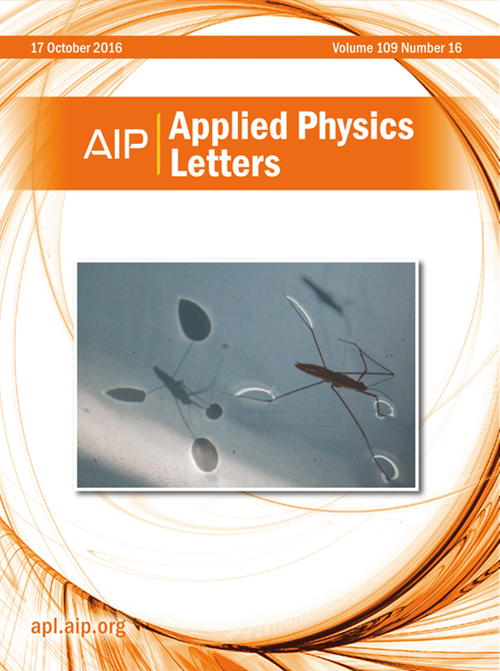Microalloying suppresses the formation of ultrastable Ce-based bulk metallic glasses
IF 3.5
2区 物理与天体物理
Q2 PHYSICS, APPLIED
引用次数: 0
Abstract
Microalloying has been widely used to enhance the glass-forming ability and stability of metallic glasses. However, this study reveals that microalloying can effectively suppress the formation of ultrastable states in Ce-based bulk metallic glasses. Over a decade of natural aging at room temperature, thermal relaxation was accompanied by the shrinkage of Ce-rich vacancy-sized open spaces driven by transient Ce diffusion. The addition of transition metals (Ni, Fe, and Co) strongly hindered this process because of their strong bonding with Ce atoms. Notably, Fe and Co atoms strongly suppressed the shrinkage of vacancy-sized open spaces by impeding Ce diffusion, preventing the glass from descending into an ultrastable state despite thermal relaxation observable. These findings highlight the role of microalloying in influencing the stability and structural evolution of metallic glasses during long-term aging.微合金化抑制了超稳定ce基大块金属玻璃的形成
微合金化被广泛应用于提高金属玻璃的形成能力和稳定性。然而,本研究表明,微合金化可以有效地抑制ce基大块金属玻璃中超稳定态的形成。经过10多年的室温自然时效,在瞬态Ce扩散的驱动下,热松弛伴随着富Ce空洞大小的开放空间的收缩。过渡金属(Ni, Fe和Co)的加入强烈地阻碍了这一过程,因为它们与Ce原子有很强的结合。值得注意的是,Fe和Co原子通过阻碍Ce扩散,强烈抑制了空位大小的开放空间的收缩,阻止了玻璃下降到超稳定状态,尽管可以观察到热松弛。这些发现强调了微合金化在长期时效过程中对金属玻璃稳定性和结构演变的影响。
本文章由计算机程序翻译,如有差异,请以英文原文为准。
求助全文
约1分钟内获得全文
求助全文
来源期刊

Applied Physics Letters
物理-物理:应用
CiteScore
6.40
自引率
10.00%
发文量
1821
审稿时长
1.6 months
期刊介绍:
Applied Physics Letters (APL) features concise, up-to-date reports on significant new findings in applied physics. Emphasizing rapid dissemination of key data and new physical insights, APL offers prompt publication of new experimental and theoretical papers reporting applications of physics phenomena to all branches of science, engineering, and modern technology.
In addition to regular articles, the journal also publishes invited Fast Track, Perspectives, and in-depth Editorials which report on cutting-edge areas in applied physics.
APL Perspectives are forward-looking invited letters which highlight recent developments or discoveries. Emphasis is placed on very recent developments, potentially disruptive technologies, open questions and possible solutions. They also include a mini-roadmap detailing where the community should direct efforts in order for the phenomena to be viable for application and the challenges associated with meeting that performance threshold. Perspectives are characterized by personal viewpoints and opinions of recognized experts in the field.
Fast Track articles are invited original research articles that report results that are particularly novel and important or provide a significant advancement in an emerging field. Because of the urgency and scientific importance of the work, the peer review process is accelerated. If, during the review process, it becomes apparent that the paper does not meet the Fast Track criterion, it is returned to a normal track.
 求助内容:
求助内容: 应助结果提醒方式:
应助结果提醒方式:


